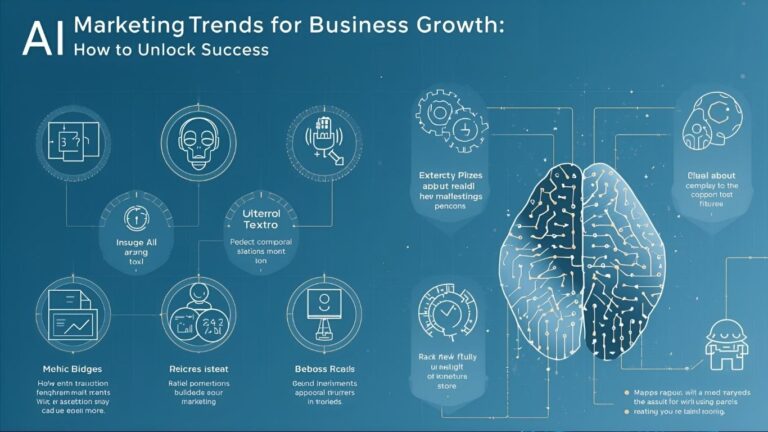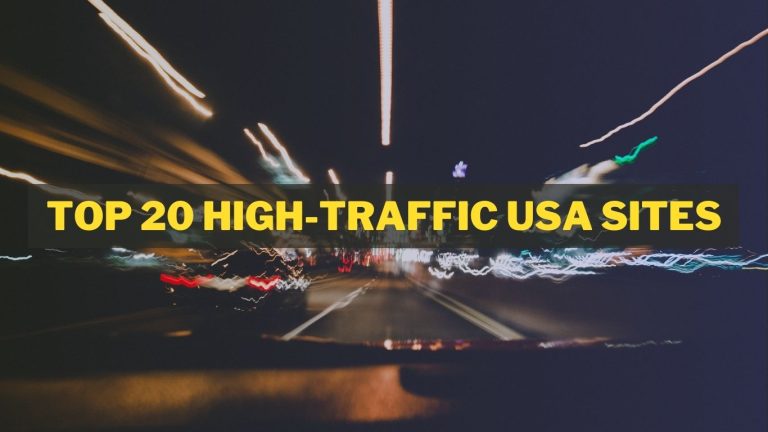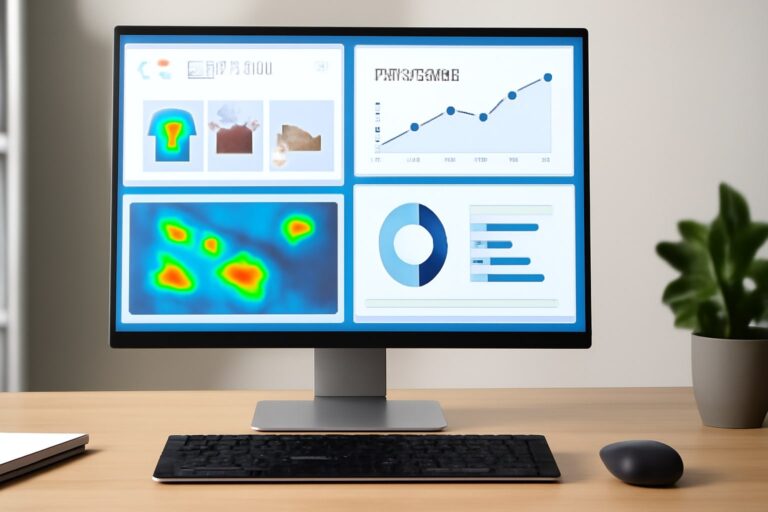How to Optimize On-Page SEO in 2025: 7 Essential Steps for Success #SEO2025 #RankingTips
How to Optimize On-Page SEO in 2025: 7 Essential Steps for Success
In today’s fast-evolving digital landscape, how to optimize on-page SEO in 2025 is a question every website owner or digital marketer is asking. SEO continues to be a cornerstone of digital visibility, but as algorithms grow more sophisticated and user expectations rise, it’s crucial to stay updated with the latest trends and techniques.
In this guide, we’ll walk through the key steps you need to take to ensure your website is optimized for 2025, tackling everything from Core Web Vitals to schema markup, content strategies, and beyond. So, if you’re ready to take your website’s performance to the next level, let’s dive in!
Step 1: Understand Core Web Vitals
Core Web Vitals have been around for a while, but in 2025, they’re more critical than ever. These metrics—Largest Contentful Paint (LCP), First Input Delay (FID), and Cumulative Layout Shift (CLS)—are now key indicators of user experience, and they significantly impact your rankings.
Let’s take a closer look at each:
What Are Core Web Vitals?
Core Web Vitals measure how users perceive the speed and usability of your site. Google uses these to evaluate whether your website provides a satisfying experience, and as of 2025, a site that performs poorly in these areas will struggle to rank highly.
Why Core Web Vitals Matter
A poor user experience leads to higher bounce rates, lower conversions, and ultimately, a negative impact on SEO. If your LCP is slow, users might leave before even viewing the full content, affecting engagement rates and search engine rankings. In fact, Google’s ranking algorithms have already incorporated these metrics, so optimizing them is crucial for how to optimize on-page SEO in 2025.
How to Optimize Core Web Vitals
Improving Core Web Vitals isn’t difficult, but it requires a strategic approach. Some tactics include:
Optimize images: Use modern formats like WebP and reduce their size without compromising quality.
Implement lazy loading: Load images and other assets only when they’re needed.
Minimize JavaScript execution: Ensure scripts don’t block the rendering of the page.
If you want to ensure your website performs optimally for how to optimize on-page SEO in 2025, improving Core Web Vitals is your first step.
Step 2: Implement Schema Markup
You may have heard of schema markup, but in 2025, it’s one of the most powerful tools for improving SEO and user experience. By providing search engines with structured data, you can enhance your visibility in search results and boost click-through rates (CTR).
What is Schema Markup?
Schema markup is a code you add to your website that helps search engines understand the content on your page. This code can define elements like products, reviews, articles, and more, which Google can then display in enhanced snippets.
Benefits of Using Schema
Using schema allows your website to be presented in more engaging, detailed ways in search results. For example, a recipe page with schema markup might show ratings, cooking times, and photos directly in the search results. This makes your website stand out and invites more clicks.
How to Optimize Schema for 2025
To stay ahead in 2025, you should implement various types of schema markup, including:
Article Schema: Adds article details like author, date published, and images directly in search results.
Product Schema: Showcases product prices, availability, and ratings to help drive sales.
Breadcrumb Schema: Makes navigation easier for search engines and users by showing your site’s structure.
When you incorporate schema markup into your how to optimize on-page SEO in 2025 strategy, you improve your chances of getting rich snippets, which can significantly boost your traffic.
Step 3: Prioritize Mobile Optimization
In 2025, mobile optimization is no longer optional—it’s essential. Google has moved to mobile-first indexing, meaning it primarily looks at the mobile version of your site for ranking purposes. If your site isn’t optimized for mobile, your SEO efforts may be in vain.
Mobile SEO Basics
Mobile optimization ensures that your site is easy to navigate, loads quickly, and provides an excellent user experience on smaller screens. This includes:
Responsive design: Your site should automatically adjust to fit any screen size, whether it’s a phone, tablet, or desktop.
Touch-friendly interfaces: Ensure that clickable elements are big enough for mobile users to interact with.
Fast mobile load times: Speed is crucial, as users on mobile are often impatient.
How Google Ranks Mobile Sites
Google uses a mobile-first indexing approach, which means it evaluates your mobile site’s content and performance to determine how to rank you in search results. If your mobile experience is lacking, it will affect your rankings, no matter how optimized your desktop version is.
Techniques for Faster Mobile Loading
To ensure your website loads quickly on mobile devices, consider:
Minimizing image size: Compress images without sacrificing quality.
Using AMP (Accelerated Mobile Pages): AMP pages load faster and provide a better user experience.
Avoiding heavy scripts: Scripts can slow down your mobile site, so minimize their use.
By implementing these mobile optimization techniques, you’ll ensure your site ranks higher and provides an excellent experience for all users, which is a critical part of how to optimize on-page SEO in 2025.
Step 4: Refresh Your Content Strategy
Fresh, high-quality content is still one of the most effective ways to improve your rankings. But in 2025, the type and quality of your content matter more than ever.
Why Content Matters in 2025
Google’s algorithms have become increasingly sophisticated, focusing not just on keyword usage but on content relevance, intent, and user satisfaction. That means that in 2025, your content must:
Provide value to users.
Answer questions in-depth.
Be structured in a way that’s easy to navigate.
How Google Evaluates Content
Google’s focus has shifted to understanding the intent behind user searches, rather than just looking for keywords. If your content matches the user’s intent and provides valuable insights, it is more likely to rank highly.
Content Optimization for SEO
To optimize your content for SEO, follow these tips:
Focus on user intent: Understand what your audience is looking for and tailor your content to meet those needs.
Use LSI (Latent Semantic Indexing) keywords: These related terms help search engines understand your content contextually.
Write long-form content: Long-form content tends to rank better because it provides comprehensive information on a topic.
When you focus on content quality and structure, it’s a critical aspect of how to optimize on-page SEO in 2025.
Step 5: Optimize for User Experience (UX)
User experience (UX) is another key ranking factor in 2025. In fact, sites that offer a better user experience tend to rank higher because they keep visitors engaged and reduce bounce rates.
What is UX in SEO?
UX refers to the overall experience a user has when interacting with your website. This includes how easy it is to find information, how quickly pages load, and how intuitive the site is to navigate.
UX and Bounce Rate
A bad UX leads to high bounce rates, where users leave your site quickly, which negatively impacts your SEO. Optimizing for UX ensures that users stay on your site longer, which signals to Google that your site is valuable.
How UX Affects Rankings
Good UX can lower your bounce rate, improve time on page, and increase conversions—all factors that signal to search engines that your content is relevant and useful. By optimizing your UX, you improve your how to optimize on-page SEO in 2025 results.
Step 6: Leverage Internal Linking
Internal linking is an often-overlooked SEO strategy that, when done right, can significantly improve your rankings. By creating a strong internal link structure, you make it easier for both users and search engines to navigate your site.
Importance of Internal Links
Internal links help search engines understand the hierarchy and structure of your website. They also pass link equity to other pages, helping those pages rank higher in search results.
Best Practices for Internal Linking
Here are some tips for optimizing your internal linking strategy:
Link to cornerstone content: Your most important pages should be well-linked to help pass authority.
Use descriptive anchor text: Avoid vague terms like “click here” and use relevant keywords.
Don’t overdo it: Too many internal links can confuse users and search engines alike.
Tools for Enhancing Internal Linking
To make the process easier, you can use tools like:
SEO plugins that suggest internal links.
Automated link-building tools that help you track link performance.
By implementing these practices, you can boost the effectiveness of your internal linking strategy, which will help you rank higher in how to optimize on-page SEO in 2025.
Step 7: Monitor, Test, and Adjust SEO
SEO is not a set-it-and-forget-it strategy. To truly optimize your site for 2025, you need to continuously monitor, test, and adjust your SEO strategies.
The Importance of SEO Monitoring
SEO monitoring tools help you track how your site is performing, what’s working, and where there’s room for improvement. By staying proactive, you can adjust your tactics and ensure you’re on the right track.
Tools for Tracking SEO Progress
Some top tools for SEO monitoring include:
Google Analytics: Track your traffic, bounce rate, and user behavior.
Ahrefs or SEMrush: Analyze backlinks, keyword rankings, and competitor strategies.
PageSpeed Insights: Test and optimize your page load times.
Adjusting Strategies Based on Data
After reviewing your performance, make the necessary adjustments. Whether it’s refining your content, improving your Core Web Vitals, or enhancing your mobile experience, adjusting your approach based on data is essential for maintaining high rankings.
Conclusion: Future-Proof Your SEO Strategy
As you work on how to optimize on-page SEO in 2025, remember that the SEO landscape is always evolving. What works today might not work tomorrow, so continuous learning and adaptation are key to staying ahead. By implementing the strategies we’ve outlined, you’ll be well on your way to mastering SEO in 2025 and beyond.
5-15 Bullet-Point Summary
- Core Web Vitals (LCP, FID, CLS) are essential for SEO in 2025 and impact user experience and rankings.
- Schema Markup enhances search visibility with rich snippets, helping your content stand out.
- Mobile optimization is a must as Google continues to prioritize mobile-first indexing in 2025.
- Fresh and relevant content is vital for ranking high, with a focus on user intent and LSI keywords.
- User Experience (UX) influences SEO performance; better UX leads to lower bounce rates and higher rankings.
- Internal linking improves website navigation and distributes link equity for better ranking.
- SEO should be a continuous effort with regular monitoring, testing, and adjustments based on data.
- Focus on fast load times, mobile responsiveness, and user-centric design for improved performance.
- Use tools like Google Analytics, Ahrefs, and PageSpeed Insights to track progress and adjust strategies.
- Content updates ensure your website stays fresh and in line with current SEO trends.
- Mobile-first design and responsive layouts are critical for providing an excellent user experience.
- Leverage schema for various content types like articles, products, and local businesses to boost CTR.
10-15 Unique FAQs with Answers
What are Core Web Vitals and why do they matter for SEO?
Core Web Vitals (LCP, FID, CLS) are metrics used to measure the user experience on your website. These include page load speed (LCP), interactivity (FID), and visual stability (CLS). They matter because Google uses these metrics to determine how good the experience is for users, affecting your rankings.
How can schema markup improve my SEO?
Schema markup is code added to your website to help search engines understand the content. It enables rich snippets like star ratings, prices, and more, which make your listings stand out in search results, potentially increasing your click-through rates and boosting SEO.
Why is mobile optimization important for SEO in 2025?
With Google’s mobile-first indexing, the mobile version of your website is now prioritized in rankings. A mobile-friendly website ensures better user experience, faster loading times, and improved rankings.
What content strategies should I follow in 2025?
Focus on creating content that answers users’ questions and matches their intent. Use LSI keywords and prioritize long-form, in-depth content that provides value and is easy to digest.
How do I reduce my website’s bounce rate?
Improve your website’s loading speed, simplify navigation, and provide valuable, relevant content. A positive user experience encourages visitors to stay longer, reducing your bounce rate.
What is internal linking and how does it help with SEO?
Internal linking refers to linking your pages within your website. It helps search engines crawl and index your site better, distributes link equity, and guides users to related content, improving rankings.
What is the best way to improve my website’s load time?
Optimize images, minimize JavaScript and CSS files, use browser caching, and leverage content delivery networks (CDNs). Tools like Google PageSpeed Insights can provide specific recommendations.
How often should I update my website content?
Updating content regularly ensures your site stays relevant. You should update content at least every 6 months, but it can vary depending on the industry and how fast information evolves.
How can I test my website’s Core Web Vitals?
You can use tools like Google PageSpeed Insights, Lighthouse, or Web Vitals extension to monitor and test your Core Web Vitals. These tools provide actionable insights for improving user experience.
What are the most important UX factors for SEO?
Speed, ease of navigation, mobile-friendliness, and overall user satisfaction are key factors for good UX. A positive UX signals to Google that your content is valuable, leading to better rankings.
How does A/B testing help with SEO?
A/B testing allows you to compare different versions of your web pages to see which performs better. This helps improve key metrics like bounce rate, time on page, and conversions, indirectly boosting SEO.
What’s the role of keywords in SEO?
Keywords help search engines understand the topic of your content. However, in 2025, it’s important to focus on user intent rather than just keyword stuffing. Use LSI keywords and provide valuable content around those terms.
What is the impact of user behavior on SEO?
User behavior signals to Google whether your content is relevant. High engagement (long time on page, low bounce rate) signals that your content is valuable, boosting your rankings.
How can I improve my website’s security for better SEO?
Secure your website with HTTPS, implement regular updates, use strong passwords, and set up security plugins. A secure site provides trustworthiness, which Google considers in ranking.
Should I use AMP (Accelerated Mobile Pages)?
AMP can improve mobile page load speed, which is a ranking factor. However, it’s not a necessity for every site. It works best for content-heavy sites like blogs or news articles.
Explore These Valuable Resources
To enhance your understanding of SEO and keep up with the latest strategies, here’s a curated list of external links with authoritative, insightful, and up-to-date content. These resources are designed to help you dive deeper into the world of SEO and digital marketing. Let’s explore!
Google Search Central Blog
Stay updated with the latest news directly from Google. Their blog provides essential insights into algorithm updates, best practices, and new features impacting SEO.
Moz – Beginner’s Guide to SEO
Moz’s comprehensive guide to SEO is perfect for newcomers and seasoned marketers alike. Learn the fundamental principles of SEO, from keyword research to link building.
Backlinko – SEO Techniques
Brian Dean’s site offers advanced SEO tips and strategies, covering everything from on-page SEO to backlink analysis. His research-driven approach is a must-read for mastering SEO.
Search Engine Journal – SEO News
One of the leading resources for SEO professionals. Search Engine Journal offers up-to-date articles, case studies, and expert opinions on all things SEO.
Neil Patel – SEO Guide
Neil Patel’s blog is a great place to learn advanced SEO strategies and practical tips that can boost your website’s performance.
HubSpot – Inbound Marketing and SEO
Explore HubSpot’s inbound marketing strategies, which include an extensive section on SEO. Get practical advice on how to attract, engage, and delight customers.
Ahrefs Blog
Ahrefs offers in-depth tutorials, case studies, and best practices for SEO. The blog is regularly updated with actionable advice to improve your SEO strategy.
Search Engine Land – SEO Insights
A trusted source for search marketing news, insights, and industry analysis. Stay on top of algorithm updates and discover tips for improving your SEO performance.
Google Webmasters YouTube Channel
The official Google Webmasters YouTube channel provides video tutorials, webinars, and presentations to help you master SEO techniques and understand search ranking factors.
Yoast SEO Blog
A fantastic resource for on-page SEO. Yoast’s blog covers everything from technical SEO to keyword optimization, providing actionable advice and tutorials.
SEMrush Academy
SEMrush offers free courses on SEO, content marketing, and paid advertising. Learn at your own pace with their structured learning paths.
Content Marketing Institute
For a deeper dive into content creation and optimization, the Content Marketing Institute blog provides expert articles and tips on content strategy and SEO.
HubSpot Academy – Free SEO Courses
Take free, in-depth SEO courses provided by HubSpot to learn about everything from keyword research to website optimization.
WordStream – PPC and SEO Resources
WordStream offers helpful insights into PPC and SEO strategies. Their blog is full of practical tips that focus on increasing both organic and paid traffic.
Social Media Examiner – SEO for Social Media
This resource dives into the intersection of social media and SEO. Learn how social signals affect SEO rankings and how you can integrate both strategies.
Each of these resources provides expert insights into various facets of SEO and digital marketing. By exploring these links, you’ll stay ahead of the curve and ensure your SEO strategies are up-to-date and effective. Keep learning, and your site’s performance will reflect it!
Blog Recommendation
For more in-depth insights into SEO and digital marketing, check out this blog on Rizwan’s website. You’ll find detailed articles, tips, and strategies that will help elevate your SEO game!
Stay connected with Rizwan for the latest updates and insights in digital marketing. Visit my LinkedIn profile to join the conversation and learn more about the digital world.







